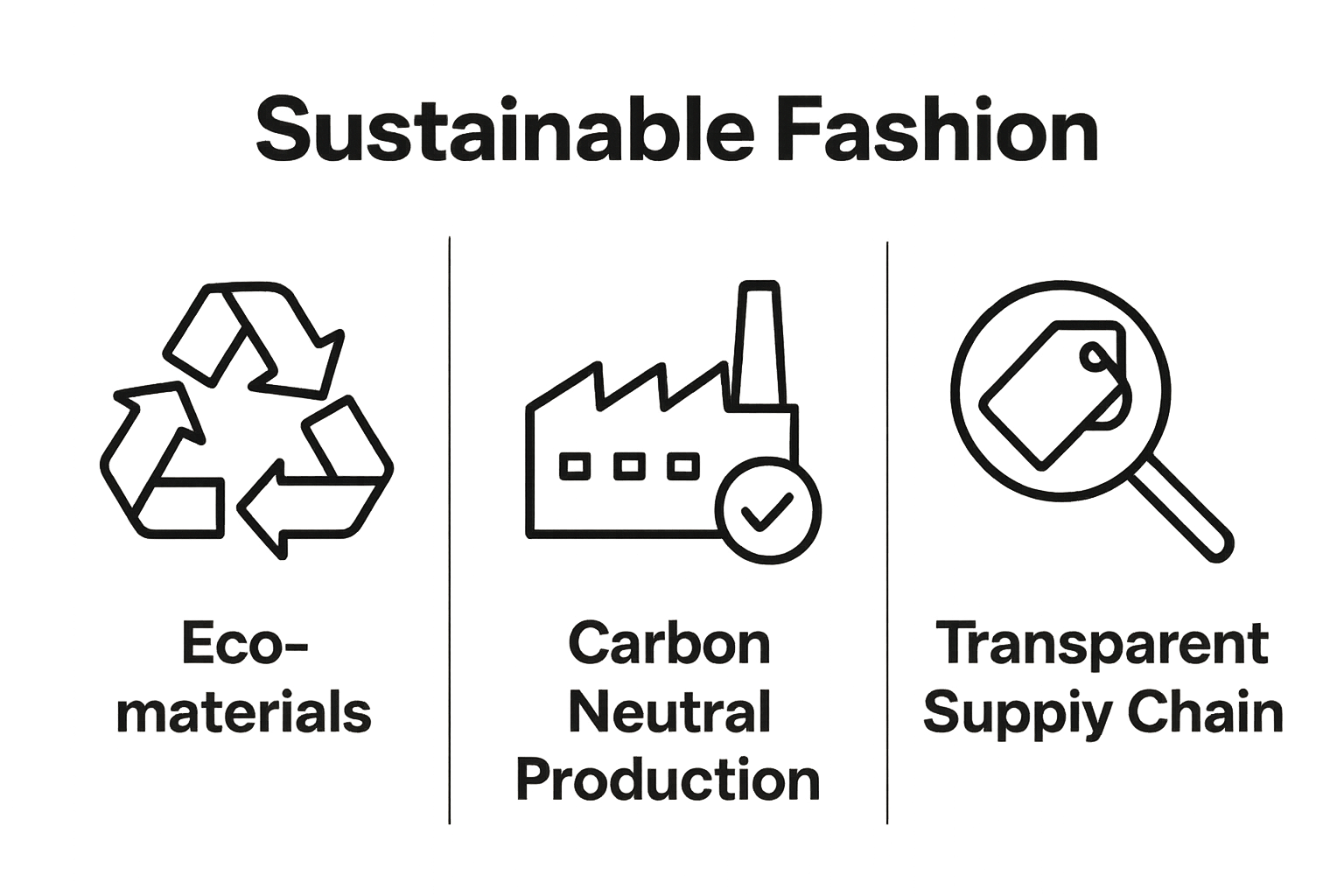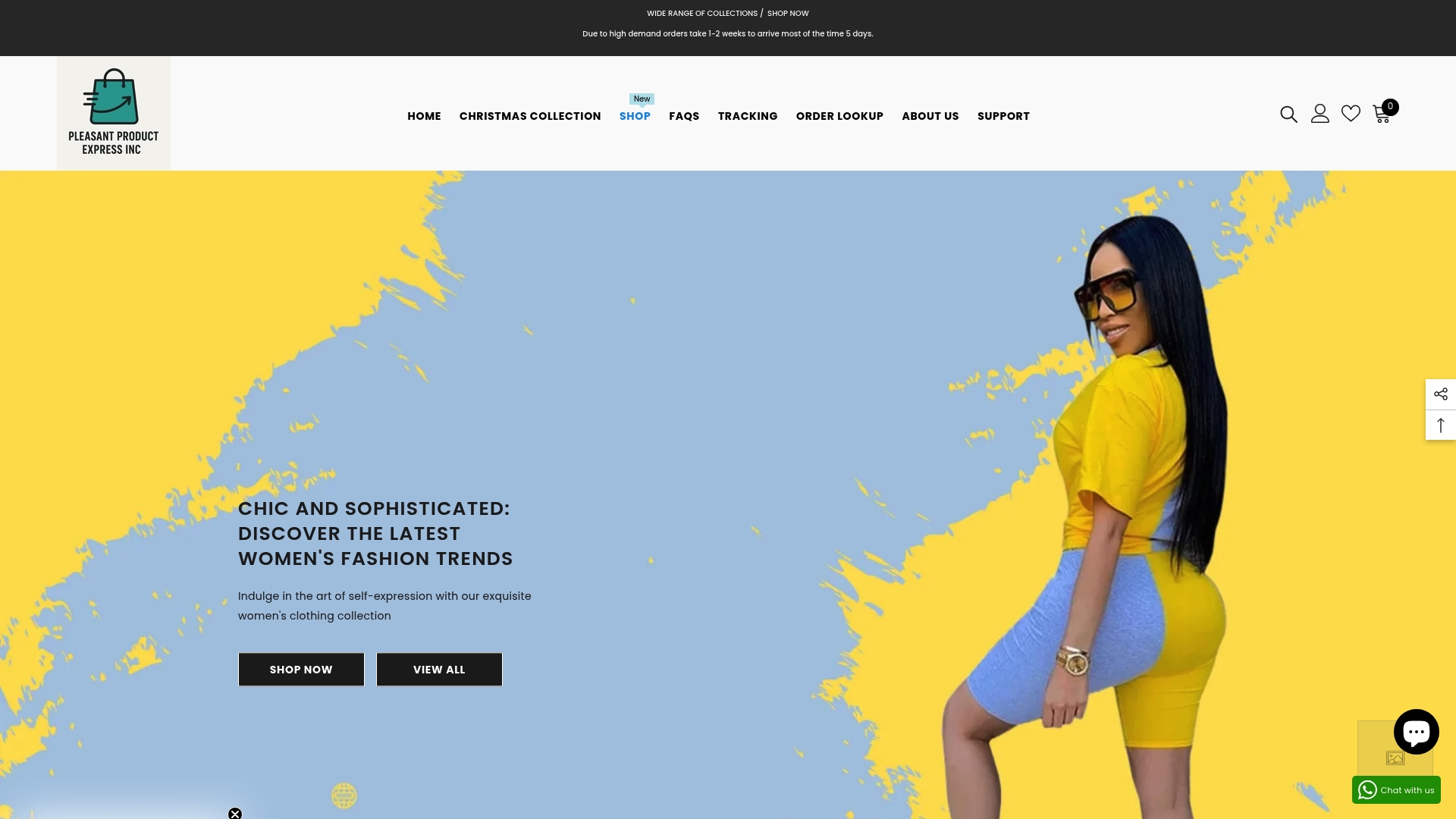What is 2025 Fashion Trend: Understanding Future Styles
Fashion in 2025 is not just about what you wear but how your clothes know you. Artificial intelligence is powering hyper-personalized style recommendations and even predicts your look before you open your closet. Surprised? Most people focus on bold prints or eco-fabrics as the next big trend. In reality, the biggest shift is clothing itself becoming a smart, adaptable extension of you, blending tech, culture, and sustainability in ways we have never seen before.
Table of Contents
- Identifying The 2025 Fashion Trend: Key Features
- Cultural Influences Shaping 2025 Fashion Trends
- Sustainability And Ethical Practices In 2025 Fashion
- Technology’s Role In Evolving Fashion Trends
- The Future Of Fashion: Predictions And Insights
Quick Summary
| Takeaway | Explanation |
|---|---|
| Technology will personalize fashion experiences. | AI and machine learning will provide tailored clothing recommendations based on individual style preferences, enhancing the shopping experience. |
| Sustainability is a fundamental design principle. | The future of fashion will integrate eco-friendly materials and practices, reflecting consumer demand for responsible fashion choices. |
| Cultural fusion drives innovative fashion expressions. | Designers will blend diverse cultural elements into unique styles, allowing for deeper personal cultural representation through clothing. |
| Digital fashion enhances creative expression. | Virtual clothing and digital experiences will change how individuals express their identities and engage with fashion. |
| Consumers will play a central role in design. | Emerging technologies will empower consumers to customize and co-create their fashion choices, shifting from passive consumers to active participants. |
Identifying the 2025 Fashion Trend: Key Features
The 2025 fashion trend represents a dynamic intersection of technology, sustainability, and personal expression, moving beyond traditional style boundaries. Understanding these emerging trends requires examining the complex landscape of global fashion influences, technological innovations, and shifting consumer preferences.
Technology Driven Personalization
Fashion in 2025 will be fundamentally reshaped by technological integration. Personalized fashion recommendations are becoming increasingly sophisticated, utilizing artificial intelligence and deep learning algorithms to analyze individual style preferences. These systems go beyond basic recommendations, creating adaptive fashion experiences that understand nuanced personal aesthetics.
Key technological drivers include:
- Advanced AI pattern recognition
- Real-time style adaptation algorithms
- Machine learning wardrobe analysis
Consumers can expect highly individualized fashion suggestions that feel intuitively aligned with their personal style, making technology a critical component of fashion selection.
Sustainability as a Core Design Philosophy
Sustainability is no longer a peripheral consideration but a central design principle in 2025 fashion trends. Designers are increasingly integrating environmentally conscious practices into every stage of garment creation. This approach involves using recycled materials, implementing circular fashion models, and creating clothing with extended lifecycle potential.
The future of fashion will prioritize:

- Eco-friendly fabric innovations
- Carbon-neutral production processes
- Transparent supply chain practices
These sustainable practices reflect a broader consumer demand for responsible fashion that minimizes environmental impact while maintaining aesthetic appeal. Read more about digital fashion transformations to understand how technology is driving these sustainable innovations.
The 2025 fashion landscape represents a holistic approach that seamlessly blends technological innovation, personal expression, and environmental consciousness, creating a more adaptive and responsive fashion ecosystem.
The following table clarifies how each major theme shapes the 2025 fashion landscape by summarizing their distinctive features and impacts.
| Theme | Key Features | Impact on Fashion in 2025 |
|---|---|---|
| Technology Personalization | AI-powered style suggestions, real-time wardrobe analysis | Hyper-personalized clothing and shopping experience |
| Sustainability | Eco-materials, circular economy, carbon-neutral processes | Environmentally responsible, long-lasting products |
| Cultural Fusion | Hybrid designs, indigenous crafts, narrative-driven pieces | Expression of complex and global identities |
| Digital Culture | Social media trends, community-driven design, rapid sharing | Democratization and rapid evolution of trends |
| Ethical Practices | Transparent supply chains, fair labor, living wages | More responsible and trusted fashion industry |
Cultural Influences Shaping 2025 Fashion Trends
The fashion landscape of 2025 is a complex tapestry of global cultural interactions, where traditional boundaries dissolve and innovative cross-cultural expressions emerge. Understanding these cultural dynamics requires examining how diverse societal influences transform fashion into a powerful medium of communication and identity.
Global Fusion and Identity Expression
Research on cultural fashion trends reveals that contemporary fashion is no longer confined by geographical limitations. Instead, designers are creating hybrid styles that celebrate multicultural identities, blending elements from different cultural traditions into cohesive, meaningful designs.
Key characteristics of this global fusion include:
- Reimagining traditional textiles in modern contexts
- Celebrating indigenous craftsmanship
- Creating narrative-driven fashion pieces
These approaches allow individuals to express complex, multifaceted cultural identities through their clothing choices, moving beyond simplistic representations.
Digital Culture and Fashion Democratization
Digital platforms have dramatically transformed how cultural influences permeate fashion trends. Social media and global connectivity enable instantaneous trend transmission, allowing fashion to become a more democratic and participatory experience. Young generations are particularly influential, driving rapid cultural exchanges and challenging traditional fashion hierarchies.
Significant digital culture impacts include:
- Viral trend propagation through social platforms
- Community-driven design collaborations
- Rapid global trend adoption
Explore our guide on style evolution to understand how digital platforms are reshaping fashion narratives.
The 2025 fashion landscape represents a dynamic ecosystem where cultural diversity, technological connectivity, and individual expression converge, creating a rich, continuously evolving global fashion narrative.
Sustainability and Ethical Practices in 2025 Fashion
The fashion industry is undergoing a profound transformation, with sustainability transitioning from a niche concern to a fundamental operational principle. In 2025, ethical practices are not merely optional marketing strategies but integral components of design, production, and consumer engagement.
Circular Economy and Material Innovation
Research from the OECD indicates that sustainable fashion is increasingly defined by comprehensive circular economy approaches. Designers and manufacturers are reimagining entire production systems to minimize waste, maximize resource efficiency, and create regenerative fashion ecosystems.
Key circular economy strategies include:
- Developing biodegradable and recyclable textile materials
- Implementing closed-loop manufacturing processes
- Creating garments with extended lifecycle potential
These innovations represent a significant shift from traditional linear production models, prioritizing environmental responsibility and long-term sustainability.
Transparency and Ethical Supply Chains
Consumers in 2025 demand unprecedented transparency about clothing origins, manufacturing conditions, and environmental impact. Brands are responding by implementing comprehensive tracking systems that provide detailed insights into every stage of garment production.
Ethical supply chain priorities encompass:
- Ensuring fair labor practices
- Providing living wages for workers
- Minimizing carbon footprint throughout production
Check out our guide to affordable fashion to understand how sustainability can coexist with accessible pricing.
The future of fashion is fundamentally about creating a more responsible, transparent, and environmentally conscious industry that balances aesthetic innovation with ecological stewardship.
To further clarify advancements in sustainability, the table below contrasts traditional fashion production with circular economy and ethical supply chain practices adopted by the fashion industry in 2025.
| Aspect | Traditional Fashion System | 2025 Sustainable Fashion Approaches |
|---|---|---|
| Materials | Predominantly new, resource-intensive | Biodegradable, recycled, recyclable textiles |
| Production Model | Linear (produce-use-dispose) | Circular (design for re-use, regeneration) |
| Labor Practices | Opaque, variable standards | Transparent, fair labor and living wages |
| Environmental Impact | High waste and carbon emissions | Minimized footprint, carbon-neutral goals |
| Supply Chain | Limited visibility | Full traceability for consumers |
Technology’s Role in Evolving Fashion Trends
Technology is fundamentally reshaping the fashion landscape, transforming how clothing is designed, produced, experienced, and consumed. The integration of digital innovations is not merely a trend but a comprehensive revolution that challenges traditional fashion paradigms and creates entirely new modes of expression and interaction.
Digital Fashion and Virtual Experiences
Research from the World Economic Forum reveals the emerging concept of digital fashion, where virtual clothing items become valuable cultural artifacts. These digital garments transcend physical limitations, allowing consumers to express identity through immersive virtual platforms, video games, and augmented reality environments.
Key digital fashion innovations include:
- Virtual clothing design platforms
- Digital avatar wardrobes
- Blockchain authenticated digital fashion assets
These technologies enable unprecedented personalization and creative expression, bridging the gap between physical and digital fashion experiences.
AI and Predictive Design Technologies
Artificial intelligence is revolutionizing fashion design processes by enabling predictive modeling, trend forecasting, and hyper-personalized clothing recommendations. Machine learning algorithms analyze vast datasets of consumer preferences, cultural trends, and historical fashion patterns to generate innovative design insights.
Significant AI applications in fashion encompass:
- Automated design generation
- Personalized styling recommendations
- Predictive trend forecasting
Explore our guide on digital fashion transformations to understand how technology is redefining fashion interactions.
The future of fashion is a dynamic ecosystem where technology, creativity, and human expression converge, creating unprecedented opportunities for innovation and personal storytelling.
The Future of Fashion: Predictions and Insights
The fashion landscape of 2025 represents a radical departure from traditional paradigms, emerging as a dynamic ecosystem where technology, sustainability, personal expression, and cultural diversity intersect. This transformative period signals a profound reimagining of how clothing is conceived, produced, experienced, and understood.
Intelligent and Functional Apparel
Research from the Fashion Scholarship Fund highlights the emergence of intelligent apparel that transcends aesthetic considerations. Future garments are being designed as interactive, responsive systems that adapt to individual physiological needs, environmental conditions, and personal wellness objectives.
Key characteristics of intelligent fashion include:
- Embedded biosensors monitoring health metrics
- Temperature-adaptive fabric technologies
- Performance-enhancing material compositions
These innovations represent a fundamental shift from passive clothing to active, responsive personal technologies that serve multiple functional purposes beyond traditional design.

Consumer Empowerment and Personalization
The future of fashion is fundamentally democratized, with consumers transitioning from passive recipients to active co-creators. Emerging technologies enable unprecedented levels of personalization, allowing individuals to participate directly in design processes, customize garment specifications, and express unique identities through clothing.
Significant personalization trends encompass:
- On-demand 3D printed clothing
- AI-driven style recommendation engines
- Modular, adaptable wardrobe systems
Explore our insights on fashion influencers to understand how individual creativity is reshaping style narratives.
The evolving fashion ecosystem represents more than aesthetic transformation. It is a profound social technology that reflects humanity’s deepening relationship with creativity, individual expression, and technological innovation.
Make Future Fashion Trends Work for You with Pleasant Product Express
Are you inspired by the rapid changes in fashion for 2025, but feeling uncertain about how to update your wardrobe in a way that balances technology, sustainability, and personal style? The article highlighted the growing need for clothing that adapts to your individual needs, supports ethical practices, and keeps up with cultural innovations. At Pleasant Product Express, you do not have to wait for the future. You can access quality, affordable, and stylish products that align with next-generation trends, right now.

Ready to move from trend-watching to trendsetting? Visit Pleasant Product Express INC where you will discover an extensive range of men’s, women’s, and baby clothing that reflects the core ideas explored in the article. Whether you want functional apparel, sustainable options, or cutting-edge looks, we deliver them to your door with convenience and value. See how easy it is to be part of the future of fashion—explore our latest arrivals and shop confidently today.
Frequently Asked Questions
What are the key features of the 2025 fashion trend?
The 2025 fashion trend is characterized by technology-driven personalization, sustainable design practices, cultural diversity, and ethical production methods, creating a dynamic and responsive fashion ecosystem.
How is technology influencing fashion in 2025?
Technology is reshaping fashion through personalized recommendations powered by AI, virtual clothing experiences, and predictive design technologies, leading to innovative ways consumers engage with their style.
Why is sustainability important in the 2025 fashion landscape?
Sustainability is a core design philosophy in 2025, with a focus on eco-friendly materials, circular economy practices, and transparent supply chains, to minimize environmental impact while meeting consumer demand for responsible fashion.
What role does digital culture play in shaping fashion trends?
Digital culture democratizes fashion by facilitating rapid trend propagation through social media, encouraging community-driven design collaborations, and allowing for a more participatory fashion experience, particularly among younger generations.
Recommended
- The Ultimate Guide to Affordable Fashion for 2025 – Pleasant Product Express Inc
- Understanding the Role of Fashion Cycles in Style Trends – Pleasant Product Express Inc
- What is Digital Fashion? Understanding Its Impact and Future – Pleasant Product Express Inc
- Understanding the Role of Seasons in Fashion – Pleasant Product Express Inc







